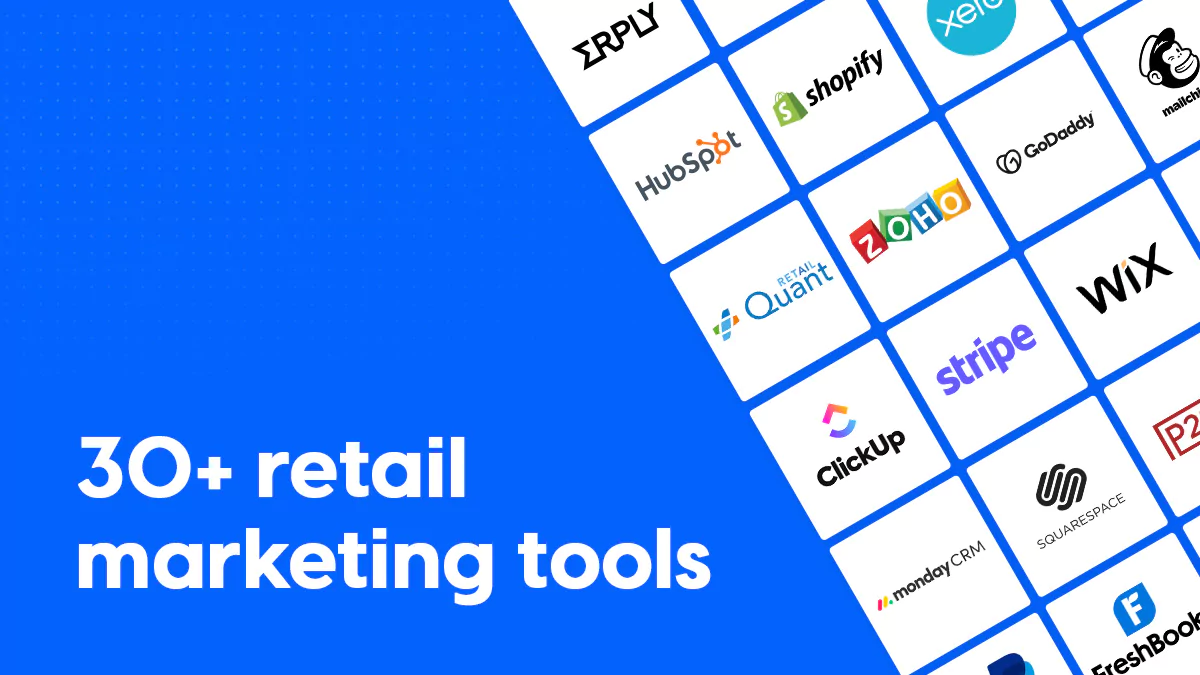Business plan and resolutions for 2020
It’s the season of new year resolutions. While most people set personal goals for the year ahead, you might be one of those people who is equally focused on business goals. At the beginning of each year business owners and marketers usually focus on business resolutions, making plans, setting goals, targets, strategies and KPIs.
Planning ahead and setting goals is actually very important, from a business perspective.
But what are good business New Year’s resolutions? Where should you start? How can you make a business plan and actually stick to it? And if you work with a team, how can you keep your team involved and motivated? These are just some questions that you might have right now. We’ll go over all of these questions in this post, and at the end, you’ll be prepared to set business goals and make a business plan for 2020.
If you’re a business owner or manager who wants to achieve great things in 2020, please set some new year goals for your business. The suggestions below are great for both entrepreneurs who are just starting a new business as well as small and mid-size businesses with multiple employees.
How to set good business new year resolutions or goals
1. Use honest, real and clear objectives as resolutions
Ask yourself what you actually want your business to accomplish in 2020. There’s no point in setting goals that sound good on paper, but aren’t what you actually want to achieve. That’s why I’m not going to provide a “good new year’s resolutions list” because there’s no one-size fits all list. Copying another company’s business goals is a clear sign that you don’t know what you really want to achieve. Not knowing clearly what you want is not ideal, but it’s fixable. After all, now is the right time for reflection and planning.
So start with a blank page, and don’t look for inspiration or “good business new year’s resolutions examples”. You might think that it’s going to help as a starting point, but it won’t (most often than not). It might actually derail you from what should be your main focus into various other directions which shouldn’t be your top priorities. Once you see “inspirational” ideas, they will influence your own goals and somehow force you to think inside the box. I’ve made this mistake in the past, and (hopefully) learnt from it.
Don’t get me wrong. You’ll certainly find excellent resolution ideas and examples set by others. However, they will not be your resolutions. Really, who knows better than you what you want to achieve in 2020? Simple answer: no one. So write your resolutions clearly, in simple words. Write exactly what you want to accomplish in the next year. It doesn’t have to sound fancy or impressive. Your resolutions, goals and plans are not to be made public, anyway.
2. Set strategic goals for the new year, instead of execution goals
Your new year business resolutions should be long-term. This is definitely a lot more difficult than setting goals for a month, but it’s also more rewarding then short-term plans, because it will help you achieve greater things.
Strategic goals are what you want to achieve in the long run. Execution goals are focused more on actions and usually set for a shorter time frame. Both these types of goals are great, but execution goals should be set to support strategic goals. One year is a pretty long time. A lot can happen, and a lot will, if you focus on the big picture and if you drive your efforts towards these strategic goals. Ask yourself: where do you want to see your business in a year?
Having a business strategy is instrumental in helping you reach your goals.
3. Avoid low-value resolutions
By setting these strategic goals mentioned in the previous paragraph, you will probably automatically aim for some high value results which are important for your business. However, I still thought it necessary to highlight this advice. Does achieving your goals mean a significant step in the development of your business? If the answer is no, you should probably focus on something else which is more important and more valuable.
Your objectives should aim to provide real business value. If not all goals, then at least your main goals should be focused on what is really important for your business.
4. Level of difficulty: Avoid new year resolutions that are too ambitious, or too easy
If your business goals are way too ambitious they could demotivate you. If they are too easy, they won’t make you work harder and as a result they will not be motivating enough. Goal setting is an art. It might take years to perfect it, to reach that sweet spot of perfectly balanced goals (challenging, but attainable). But don’t let that discourage you. Imperfect business resolutions are better than no resolutions at all.
5. Set specific, clear KPIs for each one of your resolutions
You’ve probably heard of SMART goals. SMART is an acronym which stands for:
- Specific
- Measurable
- Achievable
- Relevant
- Time-bound
So far my recommendation was to write your objectives in simple and clear words, and to set them for the period of a year. So your resolutions are already specific, relevant, achievable and time bound.
Now it’s time to refine them a little bit more in order to make them measurable. Otherwise, how will you know you have achieved your goals? This is where KPIs come in.
KPI stands for key performance indicator, and it’s a quantifiable measure (a number) which helps you determine the completion of a goal. KPIs help you track and review your goals, and they will help turn your simple resolutions into SMART business objectives.
Most people would highlight the fact that a good KPI always involves numbers. I wholeheartedly agree. However, I’ve often noticed that we focus a lot on that, and we forget about other important elements.
Let’s not forget about the fact that we need a clear, unified understanding of each concept that is used as a part of the KPI. For example, for our business we decided to look at bounce rate as a KPI for a certain objective. Some teammates assumed that we’d look at the bounce rate for a specific set of pages, others thought we would look at the bounce rate for the entire site. It’s something we should’ve made clear, right from the start.
You also need to think in advance about how you will keep track of KPIs, basically as soon as you set them. How often will you look at that number?
Also, you need to know where exactly you can find that number, and which tool you should use to keep track of it. I would suggest setting KPIs that are easy to track, with the tools that you are already using. This can also be a great opportunity to take on a challenge to explore new tools and expand your knowledge.
6. Keep track of goals and review them every few months. Don’t modify them.
Finally, your business goals will not be of any help if you forget about them during the course of the year. Don’t set your new year resolutions now if you’re going to forget about them in February.
This makes sense but it’s not easy (at least, it’s not easy for everyone). You need to set time aside for goal reviews. It’s not easy to stay focused and not get distracted by a million other ideas and things that you could do.
Here are a few ways you can avoid forgetting your resolutions and stay on track with your business plan for 2020:
- As soon as you decide on an action plan or a goal, make sure you also establish exactly when you want the review to take place
- Schedule the date and time of the review in your calendar and invite all the people who should be there for the review
- As soon as you set KPIs decide who is responsible for keeping track of them. All the people who are responsible should update the KPI numbers in a spreadsheet/ document which is accessible to all board members.
- Have weekly/ monthly meetings to discuss KPIs and Goals. During these meetings you can discuss both your strategic business goals as well as tactical goals, related to feature releases, campaigns and so on. These kind of meetings really help and I highly recommend them. You could start by having them on a monthly basis or every 2 months if you don’t currently have them.
You might be tempted to change your goals and adjust them over the year, especially if you’re not successful. Or you might get distracted by many other great ideas. But please don’t do that. Failures can be valuable lessons – treat them accordingly. Changing your goals often is like walking aimlessly with no real target. It’s hard to make any progress towards a goal if the goal keeps changing.
You can however change your plans over the year, as long as you stick with your initial goals. It’s like when you’re trying to go to a certain location. You might get there by boat, train, car or plane. As long as the destination stays the same, you can try different routes and means of transportation. It’s the same with goals.
7. Get your team involved in setting business goals and business plans
If you’re not a solo entrepreneur, get your employees or teammates involved in setting business goals and plans. I know that getting more responsibilities had a major impact on how much more responsible I became and how much more accountable I felt. This is not just my experience. It’s how most people will naturally feel if they can take decisions and if they become responsible.
This pays off in more ways than one.
First, it helps the team stay motivated and be more responsible. Your empowered team will work with you towards achieving business goals and teammates will remind each other of the goals you’ve set together.
Second, it should also help you, since you won’t have to set goals and make plans alone. Getting the team involved will lift some of the weight off your shoulders.
Having more people focused on business plan creation should have a great impact on the business itself. When more people are deeply involved and care about the success of the business you will see great results.
How to make a business plan or business strategy
So far we’ve covered business goals. Let’s move on to the next logical thing. Goals should always be paired with plans.
Benjamin Franklin once said: ”if you fail to plan, you plan to fail”. That’s why plans and goals should always go together. After all, “a goal without a plan is just a wish” (Antoine de Saint Exupéry). Goals can be a motivating factor, but without a proper action plan, it’s easy to lose focus.
If you haven’t worked much on business plans till now, you may want to start small, with simple plans, and as you get more experience you will learn to make them more detailed and more useful.
Start with a simple document. If you feel inspired, you can also make an elegant business plan design, but the content is more important than how it looks.
Whatever your goals may be, there are certain elements which should be present in your business strategy for 2020.
Goals & KPIs
Goals are exactly what you’re trying to achieve with your business plan, so it makes sense to start with that. Add your SMART goals at the very beginning of your document. That’s the first chapter of your business strategy for 2020.
Roadmap for 2020
Next chapter should be an overview of the main events/ actions/ stuff that you will work on during 2020. You may organize them by month, and have a summary for each month of the year, or by quarter. It’s really up to you.
What is really important is to correlate your roadmap with your goals. The things that you plan to do should be helping you to achieve your goals.
The roadmap is not set in stone and it doesn’t have to be. You may update it during the year, as you test out different things/ campaigns and see how your audience reacts to that. Here at Flipsnack we have a roadmap for the entire year, but we review and update it each quarter. Our product roadmap contains the main feature releases. Different departments from within our company have additional strategies and plans which are all correlated with the main product roadmap.
Marketing strategy for 2020
You may or may not have a marketing team. Even if you don’t, you should still have a marketing plan in addition to the main business roadmap. The marketing strategy is all about how you plan to promote and monetize your business, and it has to use the roadmap as a starting point.
You could start with a basic plan and add in all the details monthly or quarterly, or you could make a super detailed plan right from the start. Either way, I recommend starting the year with a calendar of events and the main campaigns of the year.
For each campaign you should also set the following details right from the start:
- Name
- Goal
- KPIs for the campaign – ideally they will help support your business goals, directly or indirectly
- Start and end date
- Campaign plan: main channels used, materials needed, who is responsible for what (before the campaign, during and after)
- Budget
- Review – Who reviews the results of the campaign and when.
The marketing strategy may change over the year, especially if the roadmap is changing. If you like to plan everything right from the start and set all the details right from the start, this might be an inconvenience, but being flexible is key. It depends a lot on your business workflows, if it’s more agile or waterfall.
We don’t plan all the little details right from the start, but at the beginning of the year, the marketing team still spends a significant amount of time planning and strategizing for the year ahead. Even though some things are changing during the year, it still helps to have a somewhat flexible plan in place.
Financial plan
It all comes down to how profitable your business is. Again, you may or may not have a financial department, but you still need to keep track of income, expenses, budgets, profitability and other business metrics. Your business doesn’t make any sense without a proper financial plan, so you really need it. If you have an accounting department they will help you a lot, but it’s not enough. The heads of each department should also look at financial data – it should inform important business decisions and marketing strategies.
Setting up budgets for each department can empower teams and help you in the long run. There’s a lot to be said about financial plans, but it also depends a lot on your business type, company size, country and so on. You can certainly find a lot of information on the internet, from experts, and tailored specifically for your type of business.
You have your business plan. What are the next steps?
Hopefully you’ve learnt a thing or two about how to set business goals and make business plans.
So what happens next?
We recommend uploading your business plan on Flipsnack, and publishing it privately. You definitely don’t want people from outside your company to have access to it. Our platform has lots of privacy options.
For such confidential documents as business plans we recommend you to only give access to a few key people from within your company, and require authentication in order for them to view the business plan. On our platform we call this option “invited people-only”.
Another great option is password protection.
Whether you decide to use Flipsnack to secure your business plans and to share them privately or not, it’s important to review them during the year. Your business new year resolutions are worth nothing if just set them and forget them!
I wish you all a productive and successful 2020!



